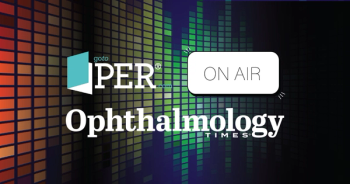
Robotic telepresence during ocular evaluations are gaining acceptance
The COVID-19 pandemic has led to greater comfort with robotic telepresence in eye screenings.
Reviewed by Priya Tailor, BA
Telemedicine came into its own during the COVID-19 pandemic. Before the pandemic in 2019, approximately 43% of medical centers in the United states were capable of telemedicine use, in contrast to 95% that reported use in 2020.
New research indicates that this scenario has resulted in greater patient acceptance of robotic telepresence (RT; Double Robotics), a mobile videoconferencing tool, during ocular examinations. In turn, this facilitates the continued use of such modalities to improve patient access to care in communities where care may be minimal, according to lead study author Priya Tailor, BA, and colleagues from the Institute of Ophthalmology and Visual Science at Rutgers New Jersey Medical School in Newark.
“RT in particular has proven useful in patient triage and can improve health care access,” the investigators said. In light of the rapid acceptance of this type of examination, Tailor and colleagues conducted a study to identify changes in patients’ attitudes toward physician teleconsultations using RT during vision-threatening disease screenings before and during the COVID-19 pandemic.
Testing the waters
RT was implemented in a community-based eye screening protocol before and after the emergence of the pandemic. Twenty-five subjects were included from July to October 2019 (mean age, 32 years; 44% women) and 40 subjects from June to October 2021 (mean age, 56 years; 55% women).
Screening volunteers measured blood pressure, visual acuity, and intraocular pressure and obtained 45° nonmydriatic retinal images and optical coherence tomography B-scans. The scans were reviewed by an off-site glaucoma or retina subspecialist using either remote desktop software or cloud-based software. The subjects later interacted with a specialist via RT and completed a 5-point survey on their consultation, Tailor explained.
The patient experience
The investigators found that the average patient comfort level with RT increased significantly (P = .038) during the pandemic. The mean values during the 2 periods of time were 4.48 before and 4.80 during the pandemic; there was a 22.5% increase in the proportion of subjects reporting 5/5 comfort.
Subject age appeared to be a relevant factor in the response to the use of RT. “Older individuals were less likely to report higher comfort before the pandemic (odds ratio [OR], 0.903; P = .014) and more likely during the pandemic (OR, 1.075; P = .023). No significant difference in comfort between genders was seen in either group (P > .7).
“With telemedicine continuing to expand in health care, our results are highly relevant and exciting,” Tailor said. “After the pandemic, even among those individuals [who] reported preference for the in-person consult, the average comfort rating was 4.68/5.”
This indicates suitability for continued use in community screenings, Tailor explained. “It further paves the way for long-term telemedicine use by health care centers and additional studies on [the use] of telepresence in triage, ophthalmology clinic operations, and medical education,” she said.
“To our knowledge, this study is the first to compare subjects’ attitudes toward a real-time telemedicine intervention before and after the pandemic,” the authors said. “We demonstrated that COVID-19 has led to greater comfort with RT in eye screenings. Telemedicine should continue to be implemented in medical centers and community screenings long beyond the current pandemic, as it is an excellent avenue for connecting remote and underserved communities with valuable subspecialty care.”
Priya Tailor, BA
Tailor has no financial disclosures related to this content.
Newsletter
Don’t miss out—get Ophthalmology Times updates on the latest clinical advancements and expert interviews, straight to your inbox.









































